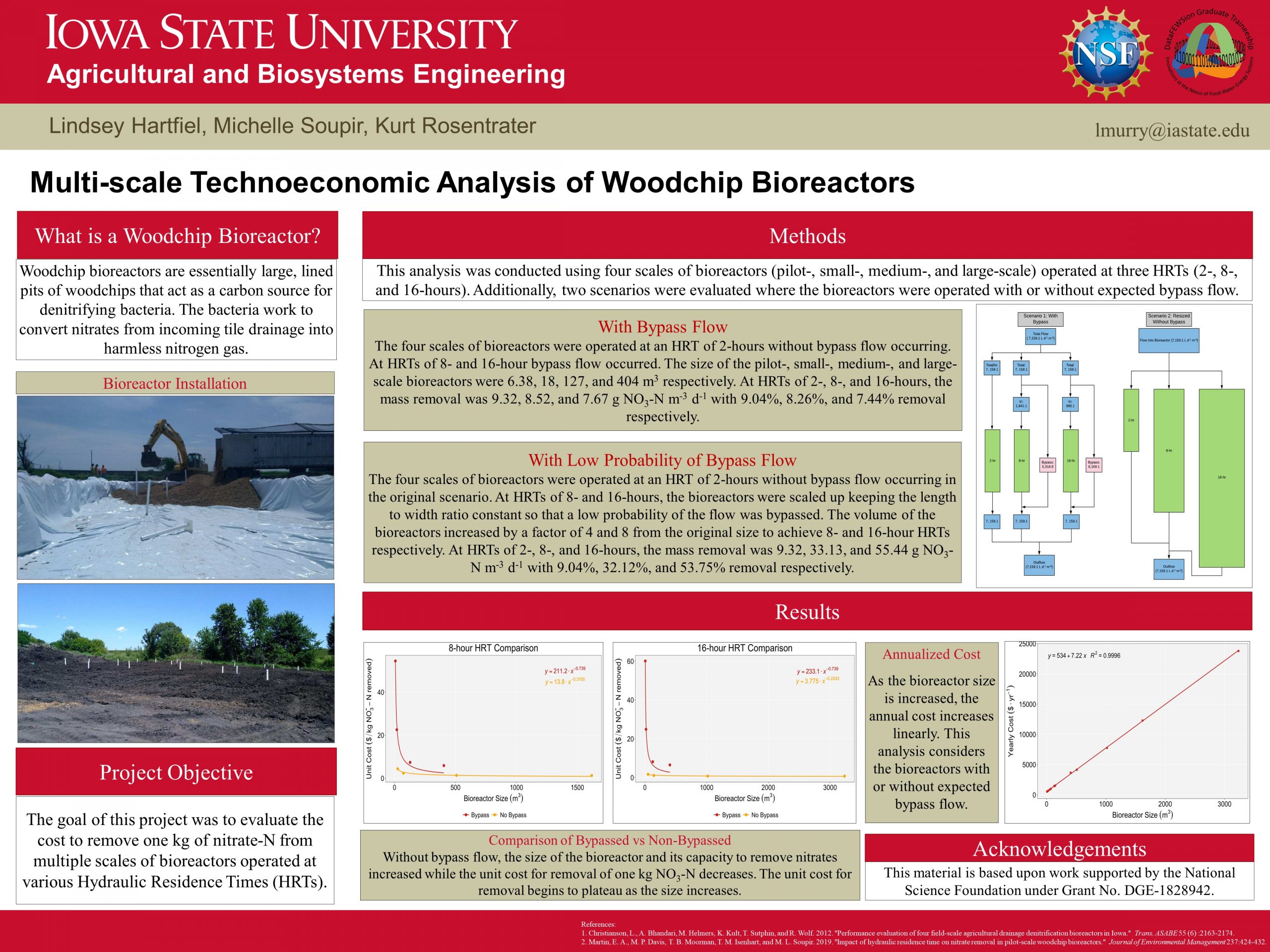Program: Agricultural and Biosystems Engineering
Projected Grad: 2024
Advisor: Michelle Soupir
Presentation Title:
Multi-scale Techno-economic Analysis of Woodchip Bioreactors
Summary:
A TEA for four scales of bioreactors operated at three HRTs and two designs, to determine the unit cost to remove NO3-N for each scenario.
Full abstract: Woodchip denitrification bioreactors are a relatively new, edge-of-field technology used to reduce nitrate (NO3-N) from subsurface tile drainage. The removal rate of nitrate is influenced by many factors including temperature, dissolved oxygen, and hydraulic residence time (HRT). The objective of this study was to conduct a techno-economic analysis (TEA) for four scales of woodchip denitrification bioreactors operating at three HRTs (2, 8, and 16 h), designed with bypass flow and with a low probability of bypass flow, in order to determine the cost to remove 1 kg of NO3-N at each bioreactor scale and at each HRT. Several assumptions were made: the same flowrate to achieve a 2 h HRT on a per m3 basis could be achieved at all scales; the same mass removal of NO3-N was achieved on a per cubic meter basis; and the 2 h HRT did not have any bypass flow at each scale. With these assumptions, the lowest unit cost was observed in the large-scale bioreactor sized to have a low probability of bypass flow at a 16 h HRT with a resulting cost of $0.74/kg NO3-N removed. The highest unit cost was observed in the pilot-scale bioreactor designed with bypass flow to achieve a 16 h HRT at a cost of $60.13/kg NO3-N removed. At higher HRTs with bypass flow, a greater percent removal of nitrate has been observed with a lower mass removal rate; by having a low probability of bypass flow in the design, a higher mass removal and percent removal of nitrate was observed leading to the above results. Contrasting this trend, the total and annual costs are greatest for the large-scale bioreactor and lowest for the pilot-scale bioreactor; however, it was determined that a 783%, 280%, and 54% increase in total cost for the pilot-, small-, and medium-scale bioreactors occurs to implement several bioreactors (66, 24, and 4, respectively) to treat the same volume of flow as one large bioreactor. These results can be used to inform future design decisions and inform stakeholders of an approximate unit cost of installing a denitrifying woodchip bioreactor over a range of expected field conditions. While a larger bioreactor with a low probability of bypass flow may represent a more cost-effective investment, the potential for unintended, negative byproducts needs to be considered in the design.

